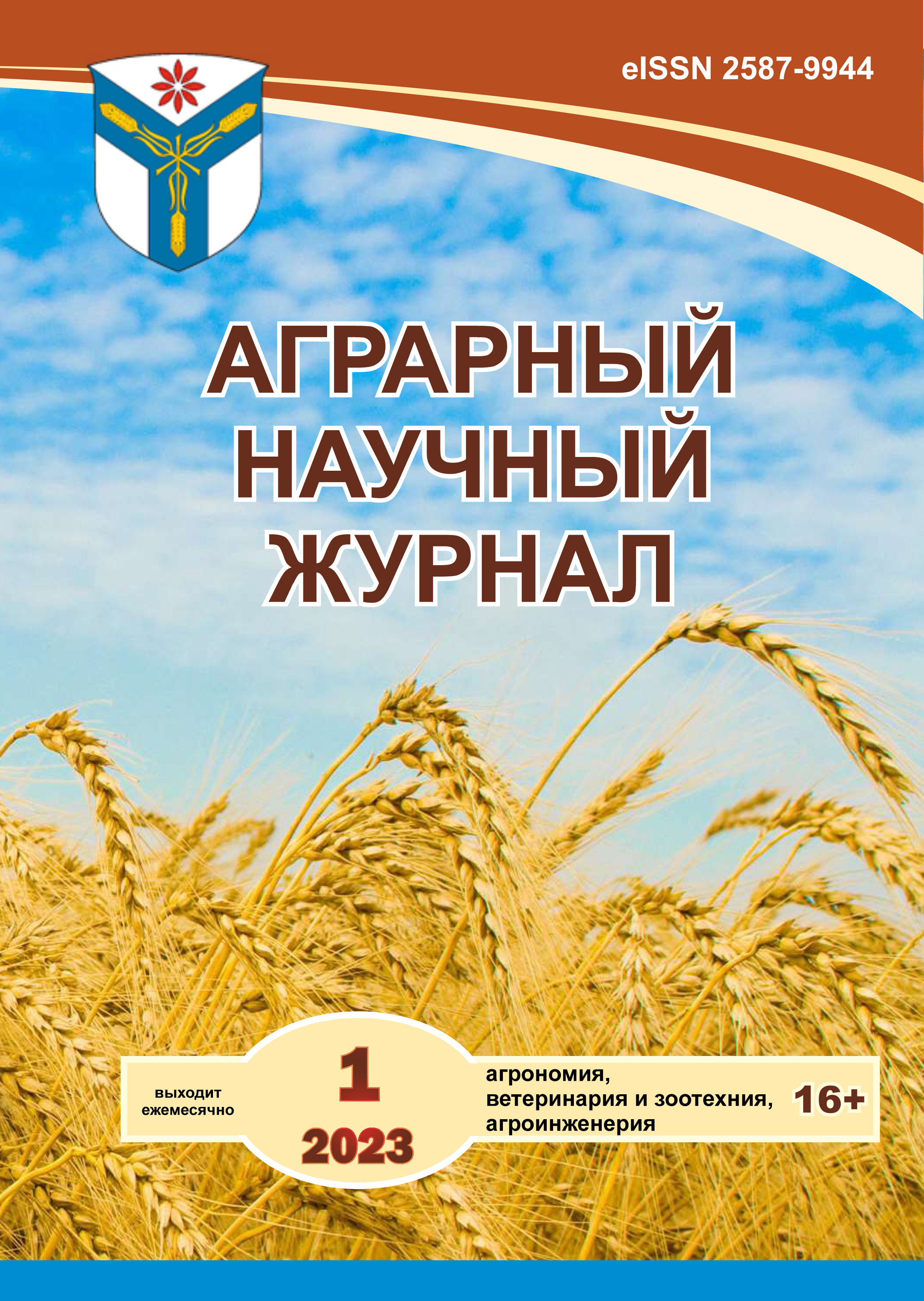Dependence of soft wheat grain yield on unstable soil moisture
DOI:
https://doi.org/10.28983/asj.y2023i1pp28-33Keywords:
soft wheat, crop rotation, permanent sowing, precipitation, productive moisture, yieldAbstract
The purpose of the study is to establish the influence of precursors, fertilizers and reserves of productive moisture during the growing season on the yield of spring soft wheat in the arid conditions of the Southern Urals. Field experiments are conducted for the first time from 2002 to 2021 on nine sowing options (for hard, corn, millet, sorghum, peas) of soft wheat in crop rotations and permanent sowing on the chernozems of the southern Orenburg region. The research is conducted using the field, thermostatic-weight method and multiple regression analysis is used. In the fifth (millet) and seventh (pea) variants, the maximum amount of spring moisture is 44.4; 43.1 mm and 136.4; 142.7 mm in soil layers 0-30; 0-100 cm. The same highest yield is observed for millet and pea precursors on the background of 0.89 t with nitroammophos and 0.82 t/ha without fertilizers. The best grain gain from mineral fertilizers was obtained by 0.12 tons for durum wheat (the eighth option) in a double-field crop rotation. In the third variant (for durum wheat), the maximum effect of moisture on grain yield in the soil layer of 0-30, 0-100 cm is determined and ranges from 22.60 to 39.83% with a significance criterion of 0.002-0.03 units. Basically, the formation of soft wheat grains of 0.81 and 0.73 t / ha occurs due to moisture consumption of 28.8; 87.4 mm. The best influence of precursors, mineral fertilizers and productive moisture reserves on the yield of soft wheat grain after cultivation of durum wheat, millet and peas in crop rotations has been revealed.
Downloads
References
Абрамов Н. В. Формирование водного режима в севооборотах интенсивного типа // Агропродовольственная политика России. 2020. № 1-2. С. 2–8.
Беляев В. И., Решотко Н. Г. Влияние предшественников яровой пшеницы на водный режим почвы, структуру урожая и качество зерна // Вестник Алтайской науки. 2014. № 4(22). С. 221–225.
Власов В. Г., Захарова Л. Г., Никифорова С. А. Влияние элементов технологии на водопотребление и эффективность возделывания яровой мягкой пшеницы // Аграрный научный журнал. 2021. № 9. С. 13–18.
Воробьёв С. А., Буров Д. И., Туликов А. М. Земледелие; под ред. С. А. Воробьёва. 3-е изд., перераб. и доп. М.: Колос, 1977. 480 с.
Доспехов Б. А. Методика полевого опыта (с основами статистической обработки результатов исследований); под ред. В. Е. Егорова. М.: Колос, 1965. 423 с.
Емельянов А. М., Емельянова Л. К. Динамика продуктивной влаги в зернопаровом севообороте сухой степи Бурятии // Вестник Бурятской государственной сельскохозяйственной академии им. В.Р. Филиппова. 2019. № 1(54). С. 25–35.
Максютов Н. А., Зоров А. А., Скороходов В. Ю., Митрофанов Д. В. Влияние погодных условий на урожайность полевых культур в степной зоне Оренбуржья // Известия Самарской государственной сельскохозяйственной академии. 2020. Т. 5. № 4. С. 8–17.
Митрофанов Д. В. Влияние температуры воздуха и влажности почвы на продуктивность зерновых культур в четырёхпольных севооборотах на почвозащитном стационаре Оренбургского Зауралья // Известия Оренбургского государственного аграрного университета. 2019. № 5(79). С. 36–40.
Научные основы производства высококачественного зерна пшеницы / В. Ф. Федоренко [и др.]. М.: Росинформагротех, 2018. 396 с.
Неверов А. А. Прогнозирование почвенных влагозапасов на основе статистического моделирования природных процессов // Известия Оренбургского государственного аграрного университета. 2020. № 2(82). С. 14–18.
Соколова Л. В., Беляев В. И. Водный режим почвы и урожайность яровой мягкой пшеницы в зависимости от предшественников в умеренно засушливой колочной степи Алтайского края // Вестник Алтайского государственного аграрного университета. 2017. № 11(157). С. 56–63.
Downloads
Published
Issue
Section
License
Copyright (c) 2023 The Agrarian Scientific Journal

This work is licensed under a Creative Commons Attribution-NonCommercial-NoDerivatives 4.0 International License.








